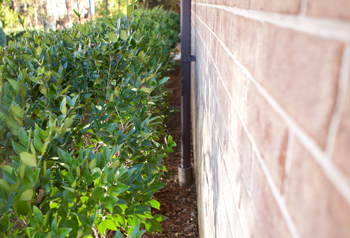4 Ways to Keep Pests Out of Health Care Facilities
 With winter all but a memory, the plants, flowers and trees around health care facilities are springing back to life. And operations or environmental services directors are putting together spring landscaping plans, such as contacting a tree care company and setting out fresh designs, as temperatures begin to rise.
With winter all but a memory, the plants, flowers and trees around health care facilities are springing back to life. And operations or environmental services directors are putting together spring landscaping plans, such as contacting a tree care company and setting out fresh designs, as temperatures begin to rise.
While landscaping plays a crucial role in the overall appearance of a health care facility property, it can also be a huge attractant and provide harborage for pests. Pests emerging from overwintering will begin actively looking for sources of food, water, and shelter, and certain aspects of a landscaping plan could provide an open invitation for them to come inside, leaving hospitals in need of some pest control birmingham.
Landscaping can play a major role in a pest management program and there are steps you can take to help keep the fight against pests outside. If there is already a pest problem, enlisting the services of Olathe pest control should be a priority and then sort out the landscaping. These practices can work against pests such as ants, flies, and cockroaches, which Association for the Healthcare Environment members listed as the most common pests in health care facilities in a 2012 survey.
Using landscaping techniques to divert pests from a health care facility is part of a broader Integrated Pest Management (IPM) program, which focuses on proactive facility maintenance and sanitation throughout a facility campus to help keep pest infestations from occurring. IPM programs make sense for hospitals and health care facilities because they are customizable; also, they do not rely solely on chemical treatments chemicals are only used as a last resort, and then only in highly targeted treatments.
A pest management professional can provide insight into implementing an IPM program at a health care complex, but in the meantime, here are four landscaping tips to help limit entry points and cover for pests.
1. Know the risks of flowers. As flowers grow into full bloom this time of year, it could be tempting to plant them in every flower bed you can, but these beautiful buds can cause pest issues. Fragrant and brightly colored flowers in bloom can attract bees and other flying pests, so consider planting fewer of these to help decrease pests on your property.
2. Create some separation. Bushes and tree limbs that brush up against a facility can give crawling pests a bridge to make their way inside, but you can create a buffer to help keep them away. Trim back vegetation at least two feet from your building. If practical, consider installing a 30-inch gravel strip around the perimeter of your buildings. The uneven surface of this strip obstructs pests like ants and cockroaches from approaching and also discourages rodents, which do not like to be out in the open.
3. Protect the pavement, too. Regularly inspect your parking lots and sidewalks to ensure that they are clean of any trash or standing water that can attract pests to the area. Keep an eye on vegetation islands that you may have in your parking lots, as they are often home to pests and should be inspected regularly. Additionally, work with your team to make sure dumpsters are clean, rotated on a regular basis and positioned as far away from the building as possible.
4. Fortify your facility. Keep an eye out for any cracks that may develop in your buildings windows, rooflines and exterior walls, as pests dont need much of a gap to enter. Rodents can squeeze through openings the size of a quarter, while cockroaches and other crawling insects only need an opening of 1/32 of an inch. If you do end up discovering any pests within the healthcare facility, then you will have to search up on how to get rid of rats and other rodents, or call in a professional to deal with the issue ASAP.
Seal any cracks or openings with a weather-resistant sealant and mesh to stop insects and rodents from sneaking through. Install weather stripping around doors and windows and change the stripping regularly to close any gaps that may develop. This will create an added buffer that will help keep ants out of your facility.
Try focusing on these areas and the landscaping around your facility. If you start managing pests on the outside this spring, you will make it harder for them to work their way inside.
